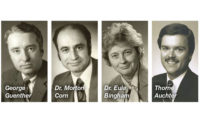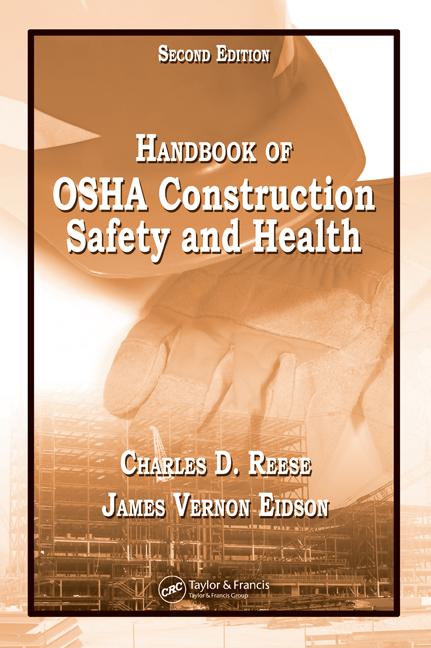See ISHN’s April issue for the review of OSHA’s early chiefs.
After the one-year recess appointment of Robert Rowland, John Pendergrass (1986 -1988), a lifelong industrial hygienist, left 3M to head the agency. Operating in the waning Reagan years, Pendergrass issued 11 safety standards and four health standards. Most notably, Pendergrass tried to update OSHA’s permissible exposure limits, but was overruled in court. He also pushed to issue voluntary safety and health program management guidelines, which almost 30 years later are currently being updated by OSHA.
Jerry Scannell (1989-1992) the head of safety at Johnson & Johnson and an OSHA official in the 1970s, was perhaps OSHA’s most ambitious leader. His proposals to regulate motor vehicle safety and workplace smoking were sweeping measures that failed to move forward. He also had plans to address ergonomics, medical surveillance, and exposure monitoring. The AIDS epidemic drove the bloodborne pathogens standard to completion in 1991, and a series of chemical and oil facility leaks and explosions led to the process safety standard in 1992. Scannell’s aggressiveness was supported by his boss, Secretary of Labor Elizabeth Dole, mirroring the activism of Eula Bingham that was backed by then Labor Secretary Ray Marshall. Explained one OSHA veteran: “The OSHA chief is only as effective as the Labor Secretary allows.”
In the case of Joe Dear (1993-1997), it was Vice President Al Gore’s campaign to “reinvent government” that steered the agency’s direction. The former director of Washington State’s Department of Labor and Industry, Dear continued to issue standards and maintain enforcement, but at a level that disappointed labor unions, who had high hopes for an activist OSHA agenda with Bill Clinton in the White House. Dear had an activist-minded Labor Secretary in Robert Reich, but VP Gore aimed for OSHA to be the poster child for a more “user friendly” federal regulator.
Charles Jeffress (1997-2001) was Clinton’s second OSHA administrator. Formerly in charge of North Carolina’s state OSHA program, Jeffress’s tenure was marked by the bitter battle over an ergonomics standard. He pushed hard for the rule, believed it necessary, but it emerged as a lame-duck standard after Gore’s failure to win the presidency in 2002. One of George W. Bush’s first act as President was to have Congress overturn the rule.
John Henshaw (2001-2004), a career industrial hygienist who worked for Monsanto at the time he became Bush’s choice to run the agency, was perhaps best known for championing VPP membership, which soared during his tenure, and for promoting the “business case” for workplace safety and health. Some OSHA-watchers believed Henshaw had larger standard-setting goals, but was handcuffed by his boss, Labor Secretary Elaine Chao. In an ISHN interview, Henshaw said, “We've got a system that we have to deal with, and I guess I wasn't fully aware of what that system was until I got here. So the frustration now has turned to, ‘that's the world we live in.’ I wish it was different, but right now that's the world we've got to live with.”
Edwin Foulke (2006-2008), an attorney who had chaired the Occupational Safety and Health Review Commission, continued Henshaw’s moderating influence as Bush’s second OSHA chief. As throughout OSHA’s history, tragedy trumped politics during Foulke’s term. He issued the largest fine in OSHA’s history following the BP refinery explosion in Texas that killed 15 workers and injured 160.
By far the longest-serving OSHA chief, Dr. David Michaels (2009-present), an epidemiologist and professor of environmental and occupational health, came into office with a tough-talking boss, Labor Secretary Hilda Solis, who told safety audiences the OSHA cop was “back on the beat.” Labor’s expectations were high, and the business community shuttered. Michaels spent years promoting the need for I2P2 – the injury and illness prevention program standard – which proved to be another sweeping OSHA proposal that failed to gain necessary political back-up. In 2016, Michaels did issue a long-overdue update of OSHA’s silica standard. Michaels is the only OSHA chief to serve in two consecutive presidential terms.
Who’s the best of the lot? Some OSHA leaders left too soon to leave an imprint. Safety and industrial hygiene pros likely would choose one of their own – Mort Corn, John Pendergrass, Jerry Scannell. Labor would lean to Eula Bingham. Business liked John Henshaw’s VPP championing. Dogged by an almost constant lack of political support and scarce resources, it’s hard to see any one OSHA chief rising clearly among the crowd.






